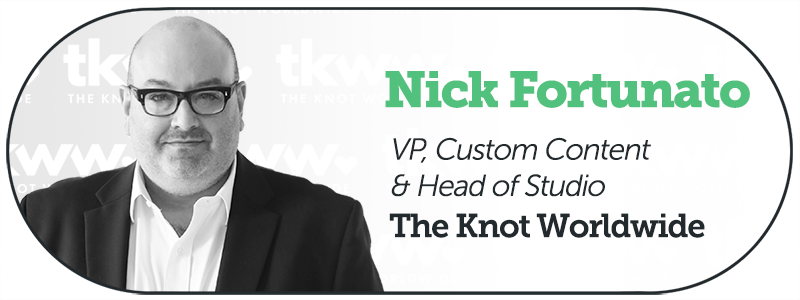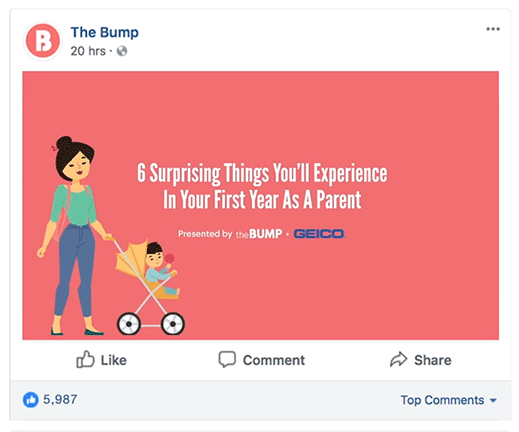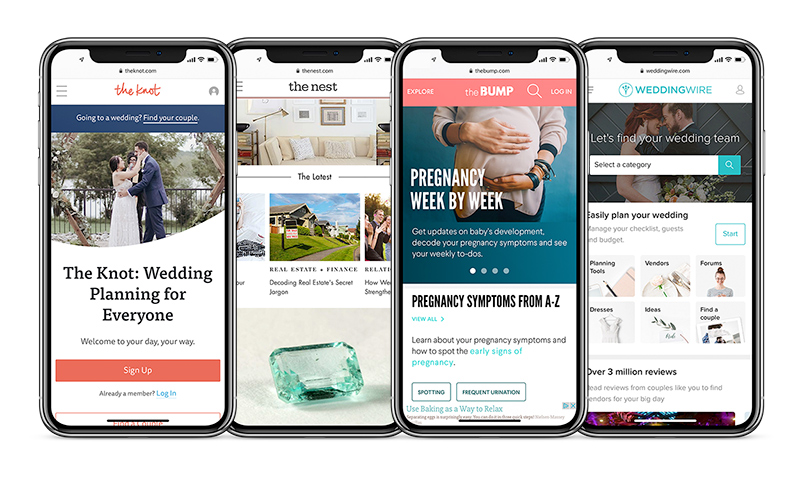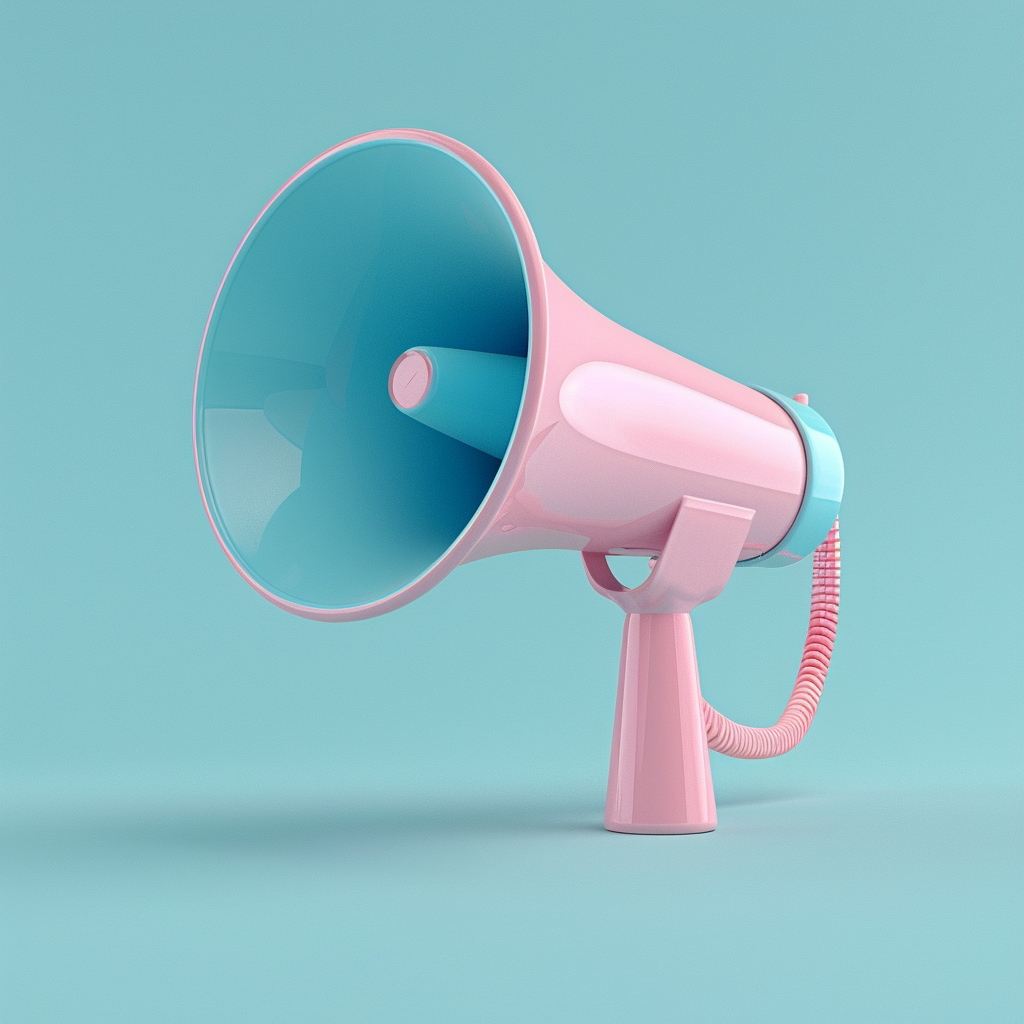Here at Keywee, we’re privileged to work with hundreds of the world’s leading storytellers. As a way to share some of their expert insights with the greater publishing community, we created The Storytellers: an interview series where we speak with some of the most accomplished thought leaders from across the industry (including Keywee customers and friends like Thrive Global, Kiplinger, and Complex).

Below is our conversation with Nick.
––
Can you tell us a little bit about your background and what led you to The Knot Worldwide?
I had an artistic career for a long time. At some point I decided that I needed to get a day job, so I said to myself, “What’s the best way I can use my technical and creative skills?” I landed on advertising, and I ended up going to work for a company called Heavy.com. There, I was able to create a bunch of really interesting and amazing integrated campaigns for advertisers.
From there I went to Dailymotion, which was the second largest video platform in the world at the time. I built Dailymotion’s original content division as well as its branded content studio.
About four years ago I came here to The Knot Worldwide, which was XO Group at the time. Branded content wasn’t something they had really invested in yet, and I took on the challenge to help them build it out.
You have twenty or so people working at The Studio @ The Knot Worldwide. What can you tell us about the team? Is there anything unique about how it’s structured?
The Studio has three pillars. The first is the sales development and marketing team that proactively talks to clients and generates ideas. The second is the production team that’s led by an executive producer. The third pillar is set up like a traditional editorial team but smaller, where we have an editor-in-chief and a mini editorial department.
When I was in talks to come work here, the sales development and marketing team sat separately from the editorial team. The editors, who came from a traditional editorial background, weren’t very comfortable creating sales content. And the sales development team was pitching big and wild ideas, but didn’t really understand the complexities of execution.
When I came in, my pitch was, “Let’s bring these two teams together. Let’s bring together the people who are pitching ideas with the people who are going to make the ideas happen. Let’s teach the sales team what it takes to execute a campaign, and let’s teach the team who executes the campaigns what sales is all about.”
Do you think having your team structured this way gives you an advantage?
I do. What’s advantageous about the way that we’re set up is that the entire lifecycle of an idea lives within this one group. We’re not handing it off for someone else to figure out. The people that pitched it and sold it have already been collaborating with the people who now have to go make the idea a reality.
That sounds like a good way to avoid situations where you wind up overpromising and underdelivering.
Exactly. I think the biggest part of my job is managing a client’s expectations, so that once we get to the finish line with them, they know what they’re getting and they’re excited about it.
You never want to promise something that you can’t deliver to your client or to your audience.
You’ve said that you like “bringing creative people together and pushing them to take something great and turn it into something amazing.” Can you give an example of how you took a project to the next level in that sense?
Sure. I’ll use a recent partnership with Olay and Procter & Gamble as an example. We had a couple of meetings with them where they looked at our work, met our creative team, talked over some ideas, and then we sat down together and wrote a brief. It was one of those experiences where the meeting goes exactly the way you want it to go: you’re brought in early in the process and you’re collaborating from the foundation on the idea.
A big part of my job is making sure the right people are in the room. I look at myself as not being the only guy with good ideas but being the person who has the experience and instinct to know when the right idea bubbles up. Good ideas can come from anywhere, which is exactly why we are structured the way we are. In this case, we were working with a client who was also very creative and had a lot of great ideas. We all pushed each other and made something we’ve all been very proud of this past year.
What was the project?
The project involved social, editorial, and a photo shoot, but at the core of the campaign was a video asset. It was a three-minute, short-form video that we created where we surprised three brides-to-be with a bridal photo shoot, but not an ordinary bridal photo shoot – this one was going to be on top of a glacier in Iceland. We brought them into our office and gave them a gift box that had Olay cream and a ticket to Iceland. We said, “We want you to take the Olay 28 Day Challenge. Take the next 28 days to get your skin ready, and then we’ll see you again in Iceland for your photo shoot.”
It was a really empowering piece of content. These three women went on a journey that they weren’t expecting to go on, and they learned about themselves and about each other along the way. We got them feeling great about their skin and super excited for the biggest day of their lives.
You’ve been in the industry for over 15 years. How has the branded content space changed during that time? Have you seen any overarching industry trends in the past few years or so?
It’s changed a lot. I don’t want to say whether it’s changed for the better or worse. There’s a lot less risk in what the industry is making now, and we have more partners asking for guarantees. Being creative, making noise, or doing something that’s seen by a lot of people just isn’t enough anymore. It has to be measurable. It has to be attributable. It has to be convertible. In a way, the art of branded content has become the science – how media plans are put together and how content is distributed is the art instead of the creative.
We’re living in such a data-driven environment where everything must be accounted for, meaning big ideas are definitely not enough anymore. Sometimes big ideas get pushed aside and that’s not awesome. What is awesome is that everyone’s thinking about being more efficient with the way that dollars are spent.
Everyone’s thinking about better ways to achieve the partner’s end goal. It’s changed in that we’re not just thinking about what we’re making, but how it’s living and being delivered, too.
Brand safety is something that has changed as well. When we talk about brand safety, it’s not just about being adjacent to questionable content or a sensitive subject matter. Now, brand safety also means privacy, which is something that we’re very concerned about here at The Knot Worldwide. For the most part, we’re a logged-in experience when people are planning their lives with our tools. We reach about one in four millennial women online across the entire internet in the U.S., even more now globally as The Knot Worldwide. Every day they’re coming to our site and planning their lives. We take information that they share with us very seriously and we hold it very safely. Privacy, for us, is our brand safety concern, which is probably very different from other people’s brand safety concerns.
As someone who has launched more than one branded content studio in his career, what would you say are the most challenging aspects of building one?
The economics have always been challenging. The margins aren’t as great as they are with, say, a programmatic ad buy, but what we’re able to do is different. We can connect with an audience in an emotional way through content. We can tell a brand story in a way that a lot of bigger companies can’t because they often rely too heavily on data to target audiences.
For us, we deal with the biggest days in a person’s life. Their first home, their first baby, their first marriage. When we can create a piece of content that solves a real problem they are having or puts their mind at ease, we are changing their lives for the better. And when a brand is in the middle of that conversation in a meaningful way it is very powerful.
Scaling can also be difficult. With branded content studios, you want to reach a sweet spot where you’re able to create content that has value and is premium enough, while still getting a return on your investment.
Another challenge is the idea of ownership. At the end of the day, it’s brand-funded content. It’s initiated by a brand making an investment to reach an audience in a certain way. You’re creating something for the brand but you’re also creating something for the audience. The content used to stay with the publisher, but now more and more brands are asking for ownership which, quite frankly, creates complications in terms of needing to keep costs down. When you keep costs down, sometimes quality can suffer. That’s just an honest challenge that I think everybody in the industry is facing.
What advice would you give a publisher looking to start driving revenue via custom content?
My advice would be to understand your audience, figure out what’s important to them, and find partners that are aligned with that and want to deliver a message that’s valuable to your audience. That’s the only way you’re going to succeed. If you’re going to take money and create content because someone asked you to, you might as well just be a creative commercial shop. You’re probably not in the right business of being a branded content studio.
You need to really take a good look at your audience, create value for them, and do that in partnership with the brand that wants to do that as well.
In your own words, what unique value does The Studio @ The Knot Worldwide offer to brand partners?
A lot of what makes us different is our emotional storytelling, but by “emotional,” I don’t mean sad. Emotions can be happy. We’re dealing with people in moments of their life that are highly emotionally charged. What we’re able to do when our audience is in this emotionally charged state is tell a brand story in that moment. We’re celebrating these people’s biggest life moments and we’re able to connect with them through our custom content and through our brand content. By doing that, we’re able to influence their purchasing decisions that are happening now, as well as influence brand loyalties that are starting to develop and will last for the rest of the audience’s lives, really.
That kind of emotional connection and storytelling is something that’s unique to us. It makes sense for our platform. It’s not hollow and artificial, it’s authentic. We’re telling our audience’s story every day and we’re doing that in partnership with a brand. That’s extremely powerful, and it gets us excited to come to work every morning.
You make custom content for a variety of properties: The Knot, The Bump, The Nest. Do you approach campaigns differently based on which property and advertiser you’re working with?
For us, at the end of the day, it’s about connecting. We believe in the power of content to connect a brand with an audience and to help change their lives. It may sound silly, but it’s true.
People come to us with questions about important things, like “is this thing my baby is doing normal?” and we’re able to help them figure things out.
When you can do that, it’s sort of beyond advertising. It’s something that impacts people’s lives, and that’s pretty awesome.
That is awesome. You’re obviously the authority in these categories, too.
We’re an authority, but the way that we’re an authority is different. Our approach is much more about telling real people’s stories instead of telling our audience what to do. There is no right way to have a wedding. There’s no right way to raise a baby. The only “right way” is the one that’s right for you.
Ultimately, we want to connect our audience with people that have been on these journeys before – people that they can identify with rather than hearing an editorial voice from the top down telling them that they need to have their wedding a certain way otherwise they’re not “cool.”
One of the topics we keep hearing about is the use of influencers to extend campaign reach and boost engagement. I know that you work with some influencers. What value do you think influencers bring to the table?
“Influencer” has become a bad word lately, but I can tell you that we work with influencers both on the branded content side and on the editorial side.
On the editorial side, we have a really exciting program where we’re tracking 25 influencers and their wedding planning progress over the next year. Again, it’s a way for us to editorially expand our lens and expand our audience through these people that are going through one of our biggest life stages.
On the branded content side, we use influencers to not only create content for us and for our brands, but also to help with the distribution of content that we’re producing.
That definitely all makes sense. Do you have any advice for publishers looking to work with influencers?
You can get a lot of value out of influencers that are passionate about their areas of interest. We don’t look to engage influencers just because they have a high follower count.
For example, we found this great influencer who became a first-time mom. She had a difficult pregnancy and she wanted to share her story. If she’s willing to help us tell a story that parallels her story, or she feels would resonate with her audience, that’s a great influencer. She might not have half a million followers, but that’s okay because those 100,000 or 50,000 followers that she does have are actually listening.
Can you tell us about any exciting campaigns that your team has worked on recently?
There are a couple that I think were awesome for different reasons. The Olay one that we talked about earlier is one of them. It started as a creative conversation, which was fun. If you watch the content, it was very much bringing our two brands together. It was about The Knot and Olay connecting and sharing the best of both. I love that one.
I also love the work that we did with Ally Bank this past year tailored to millennials. It was a massive, year-long campaign that included 21 pieces of original digestible-actionable-informational-financial content, strategically linked across all of our sites. Each site, The Knot, The Nest, The Bump, had custom editorial, infographics, and social videos. It’s a lot of fun when we’re able to play in a bigger sandbox and create these huge, effective campaigns.
What are some of the media companies/brands that you think are doing interesting or innovative stuff in the branded content space?
I always love to see what the National Geographic team is doing. They’re able to tell really, really great stories around big achievements and inspiring life moments. Everything those guys do is super premium and awesome.
For a different reason, I love the studio group at The Onion, Onion Labs. I love the work that they do – the risks that they take and their ability to convince brands to take those risks with them. It reminds me a lot of the work that we used to do at Heavy.com, so I really appreciate the challenge and their execution.
Last, but not least: you’ve been working with Keywee for a while, can you tell us a bit about your experience?
For us, our primary target is to get people to interact with our experiences and tools, but we know that we have to reach them wherever they are. So for us, it’s important to leverage the tools that can help us get in front of our audience in a more effective way, like Keywee.
* * *
Thanks so much for taking the time to chat with us, Nick! We look forward to seeing many more fresh and innovative branded content campaigns from The Studio @ The Knot Worldwide.
__
About Keywee
At Keywee, we make stories relevant and powerful for the world’s best storytellers — like The New York Times, The BBC, National Geographic, Forbes, and Red Bull.
Today, people aren’t coming to websites to search for content — stories find their audiences in feeds and apps. The upshot? Distribution is now the key for effective storytelling. Keywee’s platform unlocks audience insights using AI and data science, and infuses them into every step of the storytelling process: from topic selection, to story creation, to distribution and optimization. Keywee is backed by leading investors such as Google’s Eric Schmidt and The New York Times, and has been a fast-growing, profitable startup since its inception. To learn more, request a demo here.




